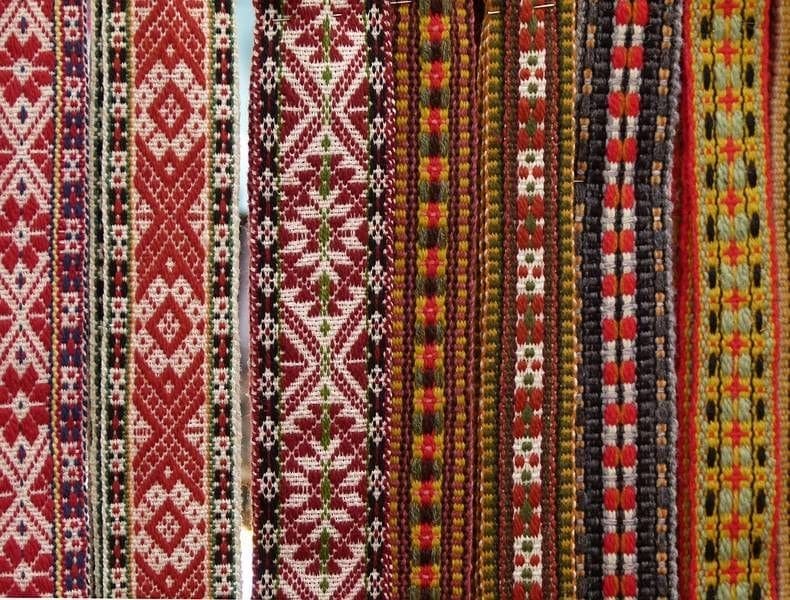Latvian Textile
Abstract-
Textiles have since quite a while ago involved a focal spot in the Latvian economy and culture. Latvian materials generally utilize regular materials, for example, flax and hemp, just as inventive procedures, to create a great fabric that is pursued the world over. As in the material societies of Japan and India, indigo has for some time been utilized as a colour tone for Latvian fabric and is even referenced in a few Latvian people melodies. Unearthings of old downy dating from the third and fifth hundreds of years BCE show hints of indigo colour.
Keywords: Latvian textile and clothing industry, Competitive advantages, textile and clothing trends.
Introduction-
Weaving holds an exceptional situation throughout the entire existence of humanity’s way of life as perhaps the most seasoned art, additionally throughout the entire existence of Latvia.
In the early Stone Age, around the second thousand BC, the job of occupants was reproducing and horticulture. These branches yielded material and fleece that was crude material for dress creation. Handling them, individuals created various procedures of wreathing, turning and weaving[1]. During this time the Corded Ware Culture began to spread around the current domain of Latvia. Remnants of the early Stone Age garments and materials are not protected.
The most established messages about materials are given by apparel remains picked up in the archaeological unearthings. These garments were made of material or fleece. Particularly minuscule sections of the woollen garments that are stayed at the bronze adornments are identified with the AD second fourth century.
The vast majority of the materials that are found in unearthings were made of downy. Its tone has gotten dim and unexceptional; be that as it may, in the wrinkles of certain fabrics the remnants of indigo blue tone are still visible[2]. Shading in indigo blue shading holding plant mēlene is frequently referenced in our dainas (Latvian people melodies). There are frequently additionally bedstraws utilized for acquiring red tone. Its tones are regularly found in an old celandine (belt). The yellow and dull earthy coloured tones that are found in the materials and celandines are accessible in a few plants. A piece of woollen materials had additionally been done from normally light or dull fleece.
Material textures made of cloth and hemp fiber remained close to nothing since they decay off quick. Widespread are joined with woollen and material hemp materials.
Establishing on the specialized investigation of the old materials we can reason that the belt-kind materials are gotten from crude and more antiquated sorts of material – winding and afterwards, the materials made in weaving outlines that are known in northern Europe since Neolithic.
These days the house weaving has decreased barely. It has been outshone by the produce of modest unfamiliar industrial facilities. Material textures are less expensive however in their stylish significance they are not of equivalent incentive to home-made garments. In-home weaving each weaver can make the material on his/her own taste and joy changing it to the inside however produced fabric must be taken all things considered. Subsequently, during the most recent years, Latvian ladies have begun to affirm the home-made fabric favourable circumstances again and getting down to work, to regard the old propensities.
Latvian Textile Industry-
Today, the textile sector is an important part of the Latvian industry, combining the best of traditional know-how with industrial and technological knowledge. This expertise has led to the creation of high value-added products such as silver and amber threads.
Around 11 000 people are employed in more than 1 800 Latvian textile companies, mostly small and medium in size. The sector’s contribution to total manufacturing output is 3.4% in 2015.
Today, the textile sector is an important part of the Latvian industry, combining the best of traditional knowhow with industrial and technological knowledge. This expertise has led to the creation of high value-added products such as silver and amber threads. Around 12 660 people are employed in 2000 Latvian textile companies, mostly small and medium in size. In 2018 the sector’s contribution to total manufacturing output is 3.2 %. The main textile industry sub-sectors are lingerie manufacturing, sewing, weaving, technical textile manufacturing, and artisan textile production. The industry is highly export-oriented, particularly the lingerie segment.

The Competitive Advantages with Latvian Textile-
The competitive advantages for cooperation with Latvian textile companies are numerous, including short lead times, small and diversified production volumes, as well as price and quality ratio. Reliability and long-term mutually beneficial partnerships have allowed the sector to maintain its positions in the currently highly volatile market.
The industry is dominated by sewing companies that act as outsourced production facilities for EU brands[3]. This is very convenient, as production and delivery times are short and technical capabilities are advanced – from embroidery and laser cutting to waterproof-garment production. Latvian sewing companies provide customized services, including pattern and other design services.
However, there are also a number of local small- and medium-sized companies that create their own collections in jersey, knitwear and other materials, pioneering natural and ecological clothing concepts. Similar philosophies and lifestyle attitudes can be found in the workshops of Latvia’s numerous home textile companies – from small to large.
Many world-renowned automotive and aerospace companies have benefited from Latvia’s competence in glass fibre production. In this field, Latvia has several highly innovative companies with great potential for further expansion.
Conclusion-
The textile sector is an important part of the Latvian industry, combining the best of traditional know-how with industrial and technological knowledge. As 2018 is the centenary of the formation of the Latvian Republic, tomorrow, an exciting exhibition will open celebrating the coming together of tradition and innovation in textiles from Latvia and beyond. Eighty-eight artists from twenty-six countries have been invited to participate in the exhibition, including Sue Stone from the UK, who will display her work entitled Rag Tag Magpie.
References-
[1] https://www.liaa.gov.lv/en/trade/industries/textile-and-clothing
[2 ] https://www.dare2wow.me/en/textile-history/latvia/
[3] https://www.indembassysweden.gov.in/pdf/textile_may_4.pdf

